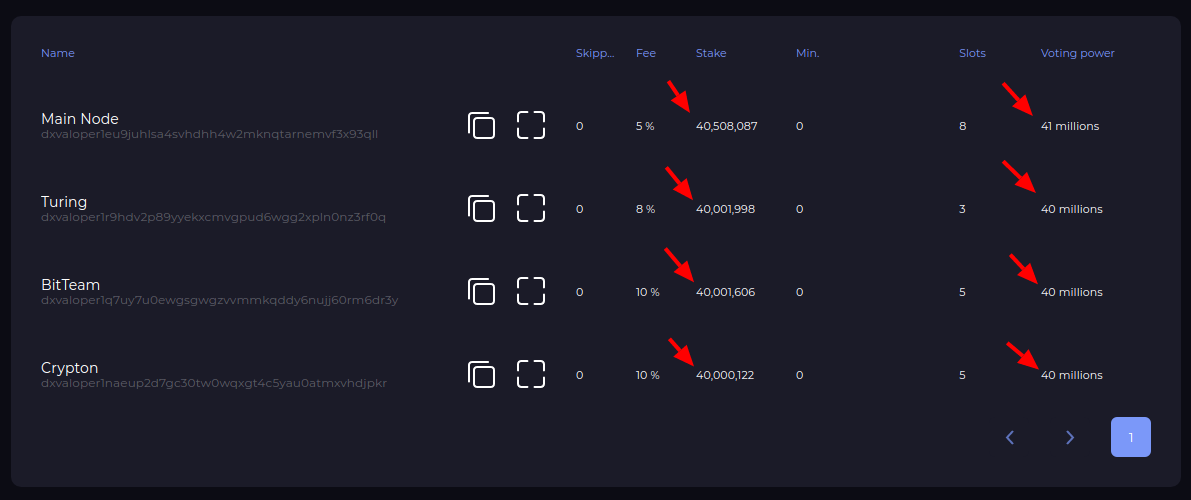# Voting power
The consensus mechanism on the Decimal network is provided by validators. And the procedure consists of several steps (rounds):
- Block proposal
- Block prevote
- Block precommit
- Block commit
- Blcok writing (into blockchain)
The block proposal is made by block producer, which is assigned by a probability algorithm. At each stage a set of validators votes for the current version of the block. If the block is correct, the validators sign it. Otherwise they don't sign the block.
To approve the block, the number of votes per block must be at least 2/3 of the total number of votes - this condition is indicated as 2/3+. Otherwise an alternative block will be offered, and the next one, and the next one until the number of votes condition is fulfilled.
This is where the Voting power is playing a big role.

Each validator has a stake, which is at risk in case of his improper behaviour. On the other hand, validator rewards for block creation are paid proportionally the stake.
On the Decimal blockchain 1 vote equals to 1 DEL of stake. So voting power is the size of validator stake shown in DEL.
The bigger validator's stake, the bigger weight the validator will have in relation to other validators, the more likely it is to become and be appointed as a block producer and the more reward it will take for itself.
In turn, the validator's stake consists of its own funds and the number of coins delegated to the validator. The better the validator performs his duties, the less he receives slashes, not greedy with transaction fees, the more people trust him with their coins and the bigger his Voting power.
